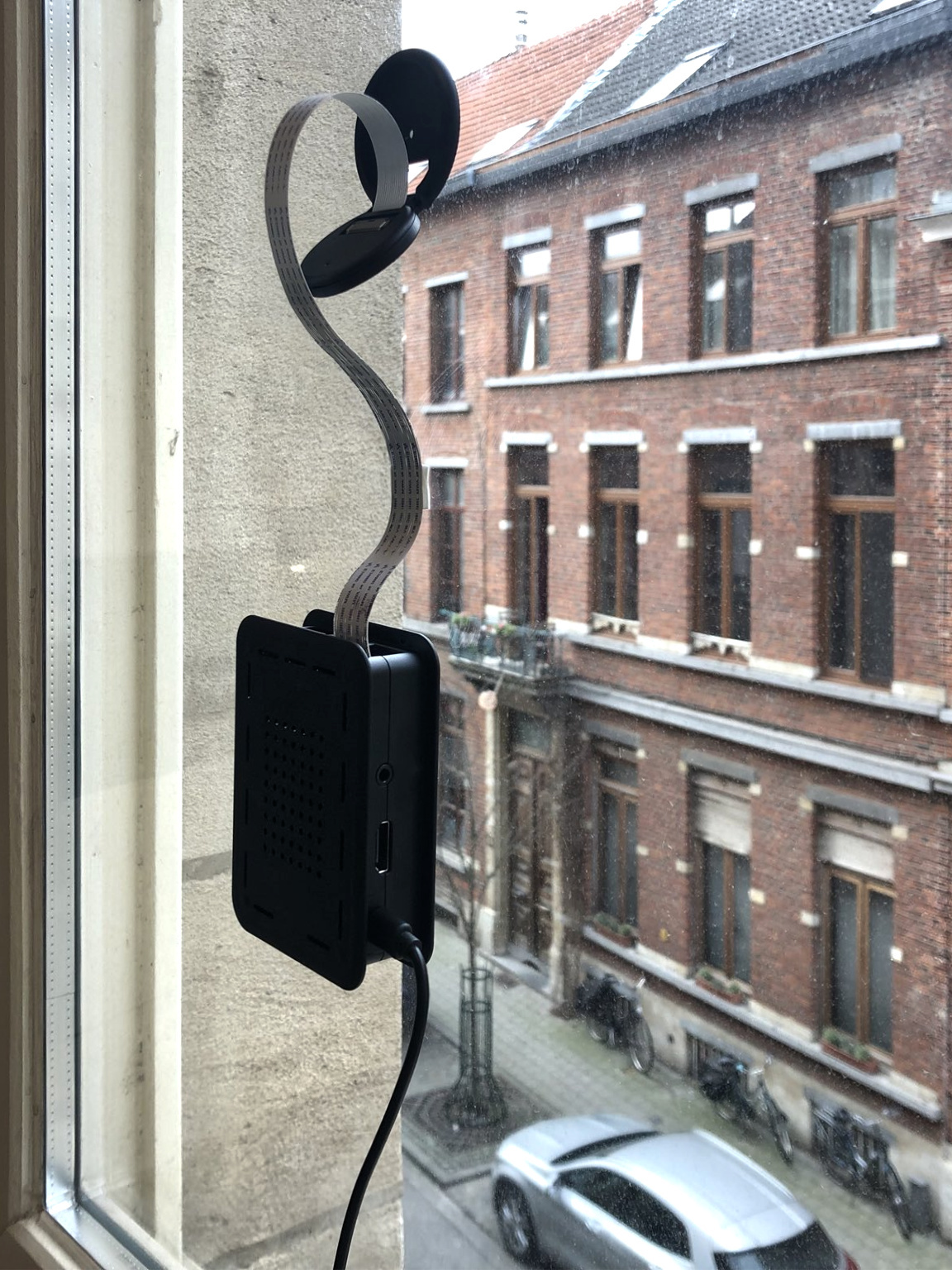Telraam V1
Raspberry Pi turned traffic counter
You source the parts, we provide the software and the data platform
Telraam V1 was Telraam's first concept sensor, and it started a traffic-counting revolution which has now been taken to the next level thanks to our purpose-built Telraam S2 device.
While we believe that the Telraam S2 offers better accuracy, precision, and an improved user experience for citizen science, we will keep supporting Telraam V1 devices over the coming years.

History
An origin(al) story
During the summer of 2018 a mix of transport engineers, data scientists, and developers sat together at TML to come up with a method that could provide traffic data on a previously unprecedented local scale, operating continuously for a fraction of the cost of existing traffic monitoring systems.
The experience of the team led them to focus on building something small, simple and affordable, but still fit for purpose. The final device would need be able to live in citizens’ windows, so that it would represent their actual ‘view’ of the street, but without being intrusive. This way it could be deployed in large numbers to get a complete picture of a wide range of streets, including minor and residential ones, not often covered by traditional counting setups.
The prototype was built using off-the shelf components such as a miniature Raspberry Pi computer and a camera that met the above criteria, but the detection algorithm was developed in house. The development of the sensor was finished before the end of the summer, then a basic back-end and front-end were built from scratch, with the initial batch of 50 devices being distributed in Leuven during early 2019. By the time the Telraam S2 was launched in 2023, more than 5000 Telraam V1 devices had been sold around the world.
Because most of our users just want to count traffic and aren't necessarily technically skilled to work with Raspberry Pi's, we only sell the Telraam S2 since its release in spring 2023. However, we know that there are plenty of techies out there who would love to get started, and for them the Raspberry Pi based V1 sensors is still a great tool to play with. That is why we are not only still supporting the old V1 sensors in the field, but also installations of new self-built Telraam V1 devices. If you want to count traffic and you’re not scared of a Raspberry Pi project, read on!DIY
What is required for a Telraam V1?
The kit required for a Telraam V1 consists of the following components (please note the specific models required):- Raspberry Pi 3A+
- Raspberry Pi Camera Module 2
- Camera mount (you can buy any available RPI camera holder, but we have also made a 3D-printed bracket ourselves, that you can still buy in our shop, or you can print it yourself using the files on GitHub)
- 16 GB SD card with the Telraam image flashed (you can find the software on GitHub here)
- Power adapter
- Recommended: a black foldable cover to serve as a sun-shade for the camera module (against internal reflections on the window)
- Optional: casing for the Raspberry Pi to make it look pretty
Please consult our FAQ for more information on how to assemble your device.
The software and firmware included in the offered SD card image were created for these specific components and may not work with a different configuration, so please make sure you source the correct hardware. Some community efforts have been made to set up V1 devices using different RPi versions (see entries on our GitHub), but we are unable to provide support for such endevours.
Telraam V1 FAQ
What and how does Telraam V1 count?
Telraam V1 uses computer vision (OpenCV) to detect objects in front of a constant (periodically recalculated median) background. Objects are detected in real time on each low-resolution frame that is sent by the camera. Some basic parameters (such as position in the frame, width, height, area, etc.) of the objects' contours are stored in the memory every couple of minutes until an algorithm processes (and later deletes) them in order to identify and track objects moving across the image frame (therefore along the street). At the end of each cycle the average parameters of the objects that were successfully tracked are sent to the Telraam servers, where they later get classified into road users based on their observed parameters, before being aggregated into quarterly and hourly count totals per mode and direction of travel.The Telraam server classifies objects originating from Telraam V1 devices into four types of modes:
- pedestrians
- two-wheelers (cyclists and motorbikes)
- cars
- heavy vehicles (anything bigger than a passenger vehicle)
What Telraam does not count:
× Telraam does not count when it is dark.
× Telraam does not recognise individual vehicles (nor number plates).
× Telraam does not recognise individual people (nor faces).
× Telraam V1 cannot reliably count the exact number of vehicles over a very short (few minutes long) time period
× Telraam V1 is not a speed camera, and it cannot provide precise speed measurements.
For more information on the technical requirements, object classification, accuracy and potential limitations, data calibration, and questions regarding the speed data, please visit our FAQ.